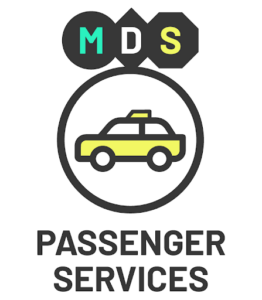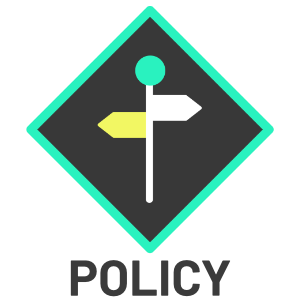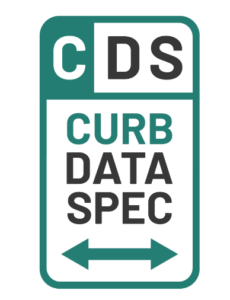EXPANDED MDS MODES
Initially created in 2018, the Mobility Data Specification (MDS) is a digital tool used by public agencies around the world to facilitate data-informed regulation, digital policy, scalable deployment of new mobility services, and the management of public space for the public good. MDS is developed through OMF’s unique open source governance model and incorporates feedback from hundreds of people representing organizations across the public and private sectors.
The latest version – MDS 2.0 – was officially launched in March 2023 and is now more versatile than ever. In addition to shared e-scooters and bikes, MDS helps public agencies manage and communicate with passenger services (like taxis and ride-hail services, including autonomous vehicles), car-sharing, and delivery robots. Work on each of the modes were the result of real-world use cases and MDS implementations across multiple cities and companies. For passenger services, we took on the ground expertise in multiple cities and ensured the spec met their use cases.
CREATING MDS FOR PASSENGER SERVICES
From ride-hail apps to robotaxis, new modes and services have emerged on city streets fueled by smartphones and innovative technologies. These technologies have altered the way we use traditional forms of transportation, shifting travel behaviors and bringing mobility into the modern era.
technologies. These technologies have altered the way we use traditional forms of transportation, shifting travel behaviors and bringing mobility into the modern era.
Despite this tech-infused transformation, the goals of public agencies remain consistent. Cities want transportation systems that are safe, equitable, efficient, accessible, and sustainable – all while protecting the individual freedom and privacy of the traveling public. Keeping up with the rapid pace of change requires public agencies to adopt some of the digital, data-driven, dynamic approaches that drive much of the evolution we are experiencing. The need to speak a common digital language inspired the most recent version of MDS, and drives the adaptation of the spec to meet new use cases related to passenger services.
During the development of MDS 2.0, the MDS working group held more than 15 public meetings to discuss use cases and map existing city data fields already being collected for taxis, ride-hail services, and/or TNCs into well-defined new MDS fields based on feedback. The cities and agencies that contributed include San Francisco, Chicago, Portland, Los Angeles, Washington DC, New York City TLC, SANDAG (San Diego), and Toronto.
For six of these cities, we cataloged the information they were already receiving and ensured the most essential and ubiquitous data fields were added into MDS 2.0, allowing those cities to move from a bespoke data format to a scalable data standard. All of the fields align directly to real-world use cases for passenger services and are cataloged and searchable in our use case database.
MDS DATA FROM OPERATORS
For trip, vehicle, accessibility, and fare attributes there are over 74 fields available to understand how passenger services are operating in the public right of way. These include the number of passengers, wheelchair accessibility, permit number, data provider information, passenger wait times, propulsion types, taxes and surcharges, and vehicle inspection dates.
These fields are also applicable to autonomous vehicles operating as passenger services. No information is available about the passengers themselves. Because MDS is flexible and can be customized for the jurisdiction, all new data fields are optional and can be tailored to each agency’s specific needs and use cases.
Also available is information about trips that have been strung together into journeys, deadheading, holding areas, loss of communications, planned and unplanned stopping, and anonymized information on driver shifts to support required labor laws.
To learn more, read the Passenger Services page in the spec.
DIGITAL POLICY INFORMATION TO OPERATORS
The MDS Policy API, which enables cities to set and digitally share information for where and how different shared vehicles can operate, makes it easy for operators to understand and implement policies.
makes it easy for operators to understand and implement policies.
Instead of public agencies communicating operating rules and data sharing requirements via PDF, they can be shared digitally with MDS. Cities can turn their operational rules into digital files that contain machine-readable information around road closures, emergency response, special events (planned and unplanned), speed limiting, no parking, and various geofencing to indicate special operating zones.
For example, an agency that is managing robotaxis transporting residents in their jurisdiction could digitally communicate rules on operating area, preferred waiting locations and pick-up/drop-off (PUDO) areas, slow streets and road closures, fees in congested areas and incentives in priority areas, and information on emergency events from first responders. Autonomous vehicle companies can use this clear and authoritative information to improve situational awareness and operations of their fleets.
HOW TO USE MDS FOR PASSENGER SERVICES
To get started using MDS, make sure to include it in your permits and tenders, and utilize its two-way communication possibilities:
- Permitting: If you’re a public agency, require the latest version of MDS for both publishing digital policy and collecting vehicle data. If you’re an operator, ensure your systems are ready to meet permit requirements.
- Policy: If you’re a public agency, publish your rules around road closures, events, speed limiting, no parking, and other geofencing using MDS. If you’re an operator, plan for how to integrate this information into your operations.
- Data Requirements: If you’re a public agency, use the MDS Requirements to digitally list the data you need, and don’t need, from MDS. If you’re an operator, leverage this information to ensure your MDS feeds meet these requirements.
- Data Collection: Create a system or hire a vendor to send or ingest MDS vehicle data and analyze for reports, billing, compliance, maps, network analysis, issue resolution, and other use cases.
CURB DATA SPECIFICATION
The OMF’s Curb Data Specification (CDS) also has direct use for agencies managing curb space for passenger services vehicles and fleets. Cities around the world are already using CDS to manage curb zones for commercial vehicles and the loading and unloading of passengers, including collaborative of eight U.S. cities that have received USDOT SMART Grant funding to implement the specification in curb management projects. CDS can work in conjunction with MDS to manage approved zones and specify the operational requirements, fees or incentives, and provide operators easy access and metrics for each zone.
fleets. Cities around the world are already using CDS to manage curb zones for commercial vehicles and the loading and unloading of passengers, including collaborative of eight U.S. cities that have received USDOT SMART Grant funding to implement the specification in curb management projects. CDS can work in conjunction with MDS to manage approved zones and specify the operational requirements, fees or incentives, and provide operators easy access and metrics for each zone.
Managing pickup and drop off for passengers at city-owned curb zones with CDS can benefit both the public agency, the fleet operator, and the passengers. The digital rules and real-time availability of each curb can be published with the Curbs API for any curb users. CDS can also track activity with sensors or directly from operator data feeds using the Events API, so agencies know what is happening at their curbs and when to affect better policies. And those events can become standardized city-wide public metrics with the Metrics API.
HOW STANDARDS BENEFIT PUBLIC AGENCIES
MDS gives cities insight into how their public realm is being navigated, and the tools to improve that experience for all
- Accurate and timely data allow better planning and program management
- Digital management greatly reduces operating costs and staff time spent monitoring mobility programs and service providers
- Allows real-time policy changes to be made to adapt to planned events and emergencies
- Supports policies that enable dynamic pricing, equitable access, and safety initiatives
HOW STANDARDS BENEFIT MOBILITY PROVIDERS
Establishing mutual trust and a frictionless working relationship between mobility providers and city officials is key to a sustainable future for mobility providers. MDS helps make that possible around the world.
- Streamlines communication between cities and mobility providers, making it easier to collaboratively solve problems with data or assets
- Provides a single reporting standard, eliminating the need for redundant data formatting and processing
- Helps providers scale by offering a platform and best practices that providers can offer to new city markets
PRIVACY, POLICY, AND OTHER RESOURCES
Whether you’re ready to implement MDS 2.0 or just looking for more information, the OMF has a variety of resources available to help get you started:
- General: Find an MDS overview with diagrams and links to key resources on our website
- GitHub Repository: Review the MDS 2.0 code release and related discussion and contributions
- Policy Guidance: View sample policy language and guidance for cities that wish to write MDS 2.0 into their operating policy, permits, tenders, or RFPs and communicate upgrade plans to providers, city technology departments, third parties, and/or contractors
- Privacy Resources: Learn more about the OMF’s work to support and enhance privacy practices, including key resources for cities and companies using MDS





